Back in the days when the Genesee pond was open to the public for fishing, there was a very real chance of tagging a huge walleye. There were never a lot of walleye to be caught, three in a day would be considered outstanding fishing but wow, that one walleye would usually be on the plus side of six pounds with some approaching 10. The non-stop pike action kept things busy in between walleye bites. We found that the best way to catch these walleye was to find a good piece of water and sink a bait to the bottom and wait them out.
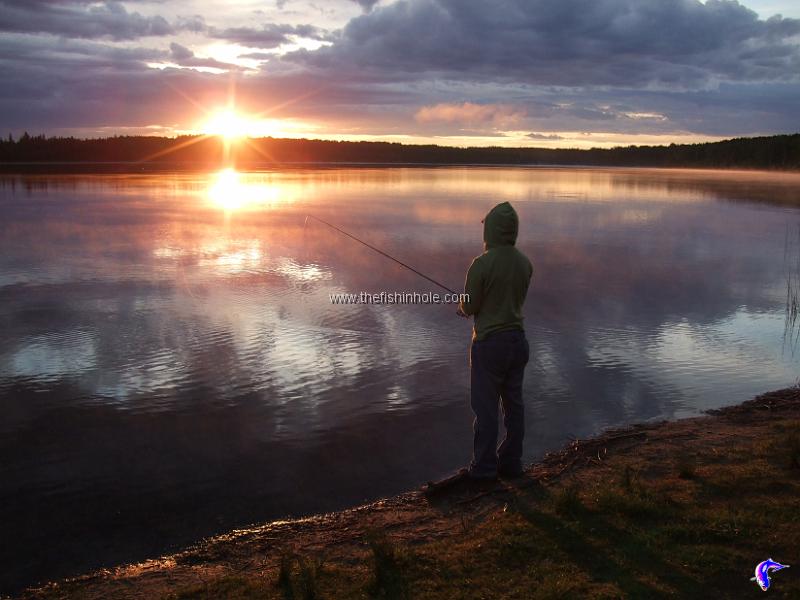

In time we came up with a system that involved threading on an egg sinker, followed by a bead, then a swivel, a couple feet of line, a small corkie or other float, and a hook with a frozen minnow for bait. I'd cast the rig out, let it sink to the bottom, reel it back a few feet to straighten the rig out, and then flip the bail to let the line go slack. Yep, that's right. That way if a walleye bit, I'd see the slack line jump and start snaking into the water. I'd pick up the rod and wait for the weight of the fish to load up the tip and set the hook on a walleye or pike. The small float I attached on the end next to the hook kept the minnow just above bottom, out of snags and in the direct line of sight of feeding fish. I never did break my 10 pound walleye at the pond, but I came pretty darn close, catching two that pushed nine pounds.
This rig has been one of my favourites to pull out on light biting fish. I've even used it on tricky pothole trout, but instead of a minnow, I use a worm. The goal is to have something tasty for the fish to see in a place where they expect food to be, on or near the bottom.
Many angler have enjoyed great on-going success working the bottom and there are a number of ways to do this. The obvious one is to drop a jig tipped with bait (where legal) down to the bottom and wait for the inevitable bite. Jigs are very, very effective and one of my absolute favourite jig techniques, which works on walleye, pike, and trout is the slow drag. That is, cast the jig out from the shallow side out to deeper water and very slowly drag it back to the boat. It will take a good dose of faith to start fishing this way, but after landing the first few trout, walleye, or pike, the confidence will come.
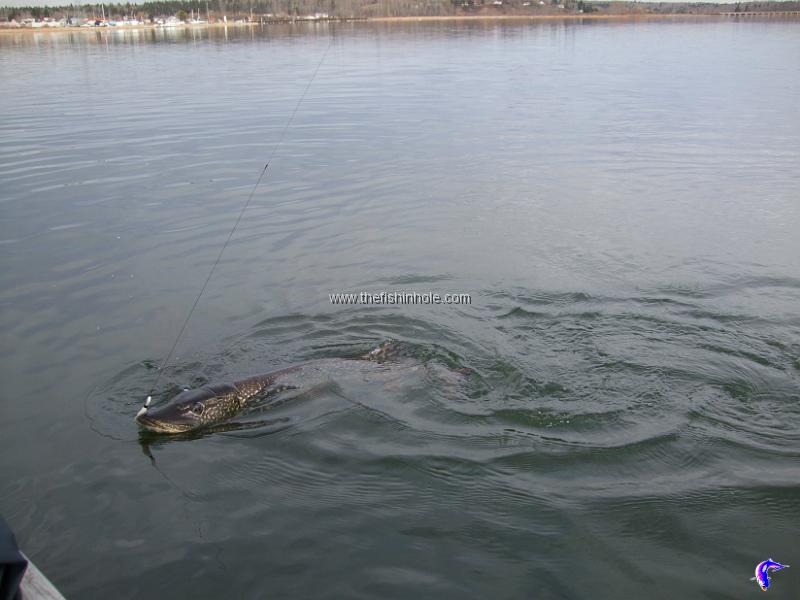

What you're looking for is not a hard strike, but rather, a feeling of getting hung up in the weeds. Feel this or anything unnatural and set the hook. I used a little black jig, my favourite colour, and completely undressed the local Lower Kananaskis bull trout population. They couldn't lay off the dragged jig and considering the fish averaged 24 to 30 inches, with my largest pushing 31 inches, it was one of the more fantastic days I've had on the water.
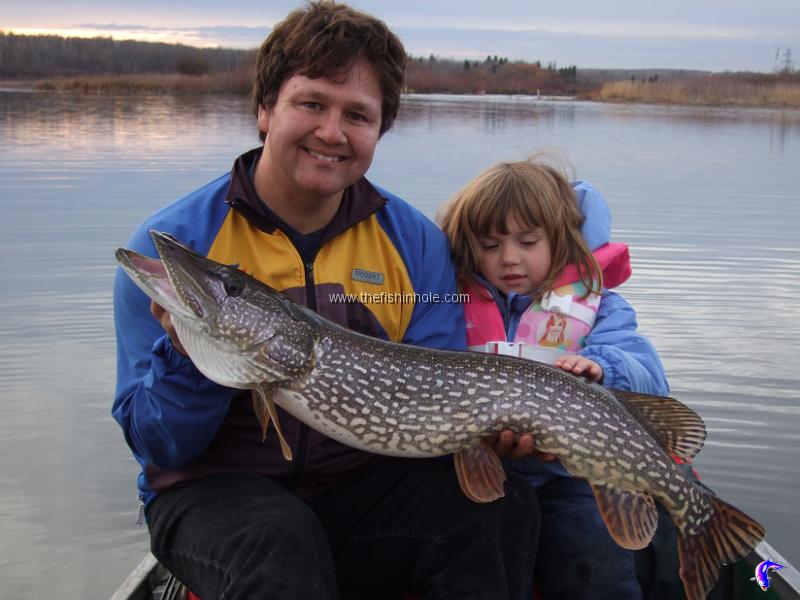

As stated earlier there are than one way to fish the bottom the next technique has to be an all time favourite. While it is a staple in the walleye fisherman's tool kit, the bottom bouncer has not achieved much cross species fame. It seems anglers that chase trout with flies are intrigued to catch walleye or pike with flies but the angler that catches walleye with a bottom bouncer and spinner rig, just doesn't seem to want to use this set up for trout. This rig catches all manner of trout; however, it is with Lakers that the bottom bouncer rig truly shines.


It is with Lakers that the bottom bouncer rig truly shines
Taking a step back, the bottom bouncer rig is a model of simplicity and effectiveness all packed into one. For one, a two to three ounce bottom bouncer gets you to the bottom pronto where I know that I'm definitively fishing in the strike zone. Two, the bottom bouncer will tick over all manner of substrate and telegraph this information up the line, so I know if I'm running my rig over rocks or mud and such. And three, the bottom bouncer is virtually snag free, allowing me to work the best piece of water, presenting my stuff giving me a greater chance for success.
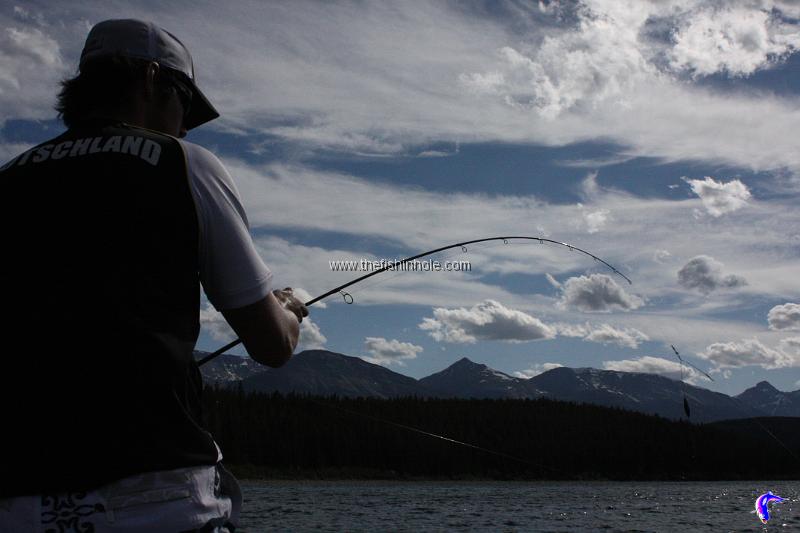



Now back to Lakers. Take a bottom bouncer, tie on four feet of 10 to 14 pound test and a flutter spoon. A whole host of manufacturers make flutter spoons so I won't go into a ton of detail on brand name. The flutter spoon is very thin and when pulled it will twirl and flash at the slowest of pace. This gives me ultimate flexibility when trolling. I can troll fast and catch aggressive Lakers, or dial it down to a crawl and cash in on the neutral fish.


What seems to matter more with Laker fishing is the depth. In Pyramid Lake in Jasper National Park, early in the season I'll be catching Lakers in the top 20 feet of water, but as the heat of the summer sets in I'll have to move down to 40 feet. Similarly, when I fished Davin Lake in northern Saskatchewan, the Lakers were often over structure 80 to 100 feet down and with the bottom bouncers we could get our rigs down with no problem.
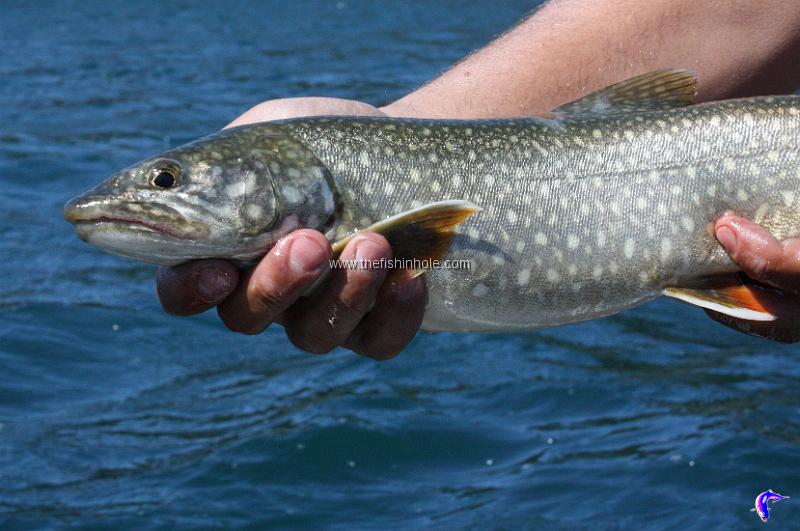

A lot of fish relate to the bottom and finding ways to get a lure, fly or bait down to them is a sure way to increase your chances. Try a new way or two to fish the bottom and I'm certain you'll be catching more fish because of it.

